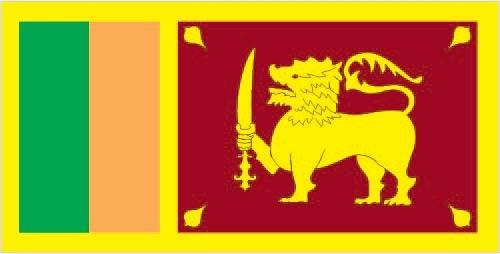Country Summary




Introduction
Background
The first Sinhalese arrived in Sri Lanka late in the 6th century B.C., probably from northern India. The island was ceded to the British in 1796, became a crown colony in 1802, and was formally united under British rule by 1815. As Ceylon, it became independent in 1948; its name was changed to Sri Lanka in 1972.
Geography
Area
total: 65,610 sq km
land: 64,630 sq km
water: 980 sq km
Climate
tropical monsoon; northeast monsoon (December to March); southwest monsoon (June to October)
Natural resources
limestone, graphite, mineral sands, gems, phosphates, clay, hydropower, arable land
People and Society
Population
23,187,516 (2022 est.)
Ethnic groups
Sinhalese 74.9%, Sri Lankan Tamil 11.2%, Sri Lankan Moors 9.2%, Indian Tamil 4.2%, other 0.5% (2012 est.)
Languages
Sinhala (official and national language) 87%, Tamil (official and national language) 28.5%, English 23.8% (2012 est.)
Religions
Buddhist (official) 70.2%, Hindu 12.6%, Muslim 9.7%, Roman Catholic 6.1%, other Christian 1.3%, other 0.05% (2012 est.)
Population growth rate
0.61% (2022 est.)
Government
Government type
presidential republic
Capital
name: Colombo (commercial capital); Sri Jayewardenepura Kotte (legislative capital)
Executive branch
chief of state: President Ranil WICKREMESINGHE (since 20 July 2022); the president is both chief of state and head of government; prime minister (vacant)
head of government: President Ranil WICKREMESINGHE (since 20 July 2022)
Legislative branch
description: unicameral Parliament (225 seats; 196 members directly elected in multi-seat district constituencies by proportional representation vote using a preferential method in which voters select 3 candidates in order of preference; remaining 29 seats, referred to as the "national list" are allocated by each party secretary according to the island wide proportional vote the party obtains; members serve 5-year terms)
Economy
Economic overview
lower middle-income South Asian island economy; extremely high public debts; rapid inflation; facing domestic food, fuel, and medicine shortages; tourism industry disrupted by COVID-19; known garment and commodities exporter; low foreign exchange reserves
Real GDP (purchasing power parity)
$274.8 billion (2020 est.)
Real GDP per capita
$12,500 (2020 est.)
Agricultural products
rice, coconuts, sugar cane, plantains, milk, tea, cassava, maize, poultry, coir
Industries
processing of rubber, tea, coconuts, tobacco and other agricultural commodities; telecommunications, insurance, banking; tourism, shipping; clothing, textiles; cement, petroleum refining, information technology services, construction
Exports
$19.41 billion (2019 est.)
Exports - partners
United States 24%, India 8%, United Kingdom 7%, Germany 7% (2019)
Exports - commodities
clothing and apparel, tea, used tires, rubber products, precious stones, cinnamon (2019)
Imports
$24.56 billion (2019 est.)
Imports - partners
India 24%, China 23%, Singapore 7%, United Arab Emirates 6%, Malaysia 5% (2019)
Imports - commodities
refined petroleum, textiles, gold, cars, broadcasting equipment (2019)
Exchange rates
Sri Lankan rupees (LKR) per US dollar -
Page last updated: Thursday, July 21, 2022